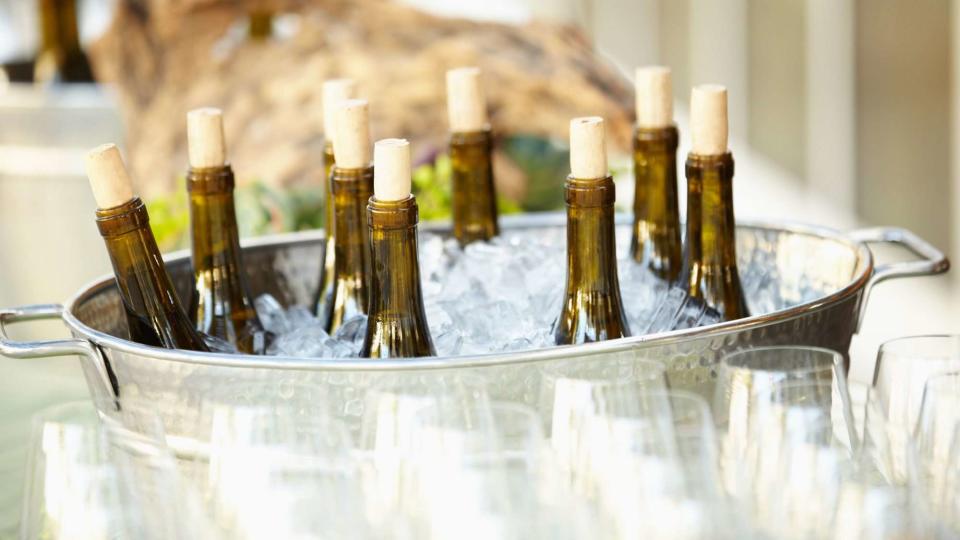Add These Two Ingredients to Your Ice Bucket to Chill Wine
When it comes to chilling a bottle of wine, the Wine Wise Guy thinks you might be overlooking one crucial step.

This may be the most ridiculous rant you’ve ever read, but I’m going to write it anyway because we’re at the peak of wine-chilling season: Many of you are wasting your time using ice buckets the wrong way. “Wrong way?” you ask, incredulously. Yes indeed, I reply, there is a wrong way, and it has to do with the instrument’s name. Ice. Bucket. Those two words lead many to think that the only thing that goes into this essential chilling vessel is ice (apart from a bottle of wine, of course). That’s why, at party after party and restaurant after restaurant, I behold wary waiters, frazzled friends, and hapless hosts literally pile-driving bottles of wine (or beer) into mountains of ice that simply (pound) won’t (pound) yield (pound). Ultimately, they leave the bottles standing on top of the ice cubes. Which, not to put too fine a point on it, does absolutely nothing.
The way to fix this problem is incredibly simple. Add water. It’s as easy as that. Fill an ice bucket with ice, then halfway up with water, and then drop in the bottle. If there's room for more water, add it. Now we’re chilling! For big parties pull out an appropriately big bucket, or a giant stock pot — heck, even a garbage can — and do the same. The thing is, by adding water you’ve created an icy bath that’s in contact with the entire surface of the bottle. With just cubes, there’s a lot of air in between — and that’s assuming you can even get the bottle down into the ice in the first place.
Related: How to Chill Wine Fast
But wait, I can get even geekier! If you need to chill Champagne super-fast, or build an ice bath for a long party, here’s another secret weapon: salt. Depending on the size of the bucket or tub, add a cup of salt for every gallon of water. I suggest making a slurry in the bowl first by whisking the salt together with a little warm water to dissolve it. Dump the ice on top, and add cold water quickly. What's the difference between this and a regular ice bath? Basically, adding salt upsets the equilibrium between the freezing temperature of water and the melting temperature of ice; normally those are the same, 32˚F, but water with salt in it has a lower freezing temperature (in fact, water with foreign particles of almost any kind dissolved in it has a lower freezing temperature — sugar would work, too, for instance). The melting ice chills the salted water down below the regular freezing point, to as far as 15˚F or so. Not much fun for swimming, maybe, but just right for an overly warm bottle of wine.
For more Food & Wine news, make sure to sign up for our newsletter!
Read the original article on Food & Wine.

